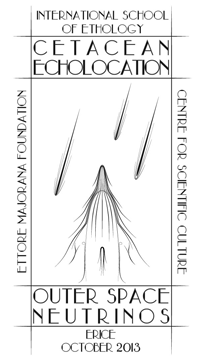Speaker
Walter Zimmer
(CRME, I)
Description
Fourier noted in his book on Théorie analytique de la chaleur that while the ultimate causes for the surrounding world are hidden to us, all natural processes follow simple and unchangeable laws that may be discovered through observations. While Fourier was interested in the understanding of a physical phenomenon (heat), it seems appropriate to consider also complex biological processes as a synthesis of simple laws and to try to learn about the biological reality by searching for the simple relationships of the underlying biological processes. The set of such simple, mostly mathematical relationships constitute a biological model. Model-based bio-acoustics is, in this sense, an attempt to explain the observations, that is, acoustic observations of deep diving cetaceans, by a set of simple rules, that is, by a model. Deep diving cetaceans are known to produce short sound pulses and it is generally accepted that these sound pulses are emitted for foraging purposes. Following the echolocation paradigm of bats, the common assumption is that echolocating whales use sound to search for, approach and capture their prey items. Using data from tagged sperm whales and a simple foraging model, I will show that the classical ‘search, approach, capture’ hypothesis for echolocation does not necessarily hold for deep diving sperm whales. In particular, the sperm whale echolocation data may be better described by an ‘overview and intercept’ model. As such, functional models are fundamental to the understanding of reality, I will discuss the consequences of the presented echolocation model for the foraging ecology of sperm whales.

